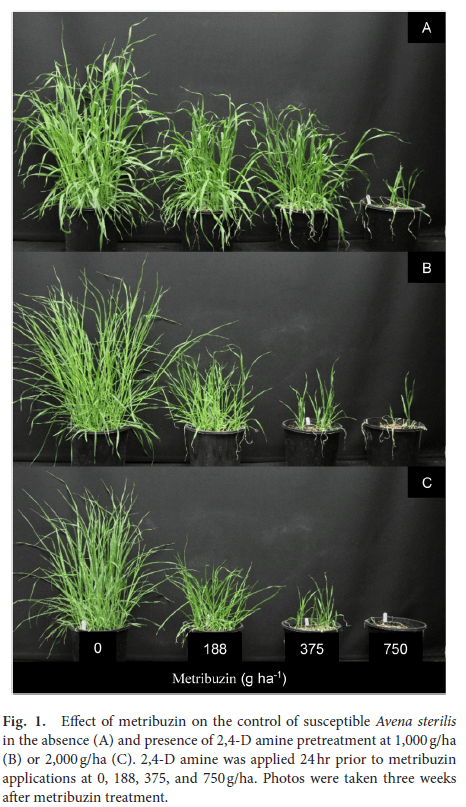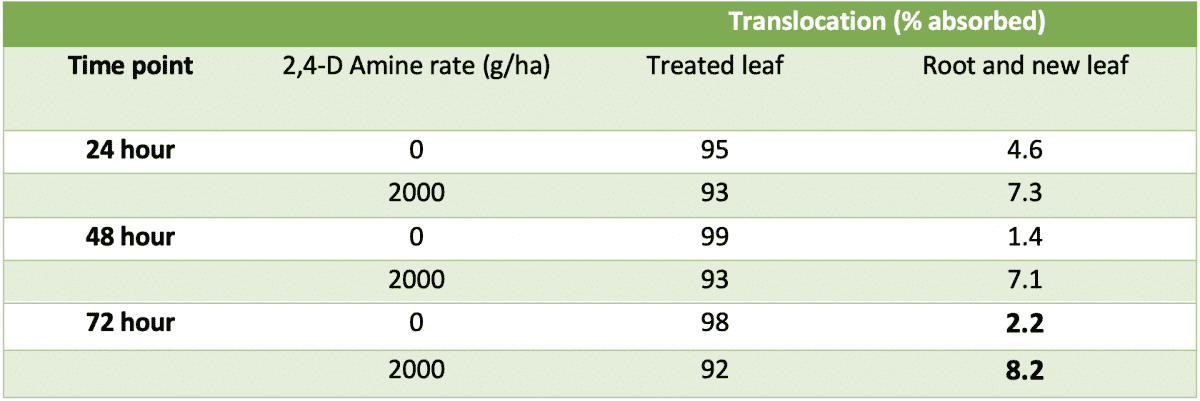
Dr Qin Yu and Dr Heping Han
“I leverage synergies”
“I monetise leveraged synergies”
“I initiate synergy monetisation strategies”
Never ask a marketing executive what they do for a living!
But if a weed researcher such as Heping Han and others from the Australian Herbicide Resistance Initiative (AHRI) start talking about synergy it’s time to listen. Synergy between herbicides is rare but extremely sought after. This synergy is often claimed but it takes a specific research technique to confirm the synergy.
Australian farmers and agronomists have previously observed synergy between phenoxy herbicides (2,4-D) and PSII herbicides (Group C/Group 3 herbicides such as metribuzin) and now we know why, thanks to this new AHRI research.
When wild oats were pre-treated with 2,4-D amine, control with metribuzin increased from 7.5 per cent to 55pc. This appears to be due to increased translocation of metribuzin to new leaves. The researchers measured significant increase in translocation to the roots as well but given that no photosynthesis happens under ground it is likely that the increase in translocation of metribuzin to new leaves is responsible for the synergy.
We have previously reported that 2,4-D can antagonise other herbicides which creates a challenge for growers and agronomists to develop the herbicide mixtures and sequences that get the best out of the herbicides involved.
Metribuzin and other PSII herbicides (Group C/Group 3) act on photosynthesis. More specifically, these herbicides block the flow of electrons through photosystem II.
Explaining how phenoxy herbicides such as 2,4-D work is a little more complex https://ahri.uwa.edu.au/how-stuff-works-24d/
Phenoxy and PSII herbicides often both have activity on broadleaf (dicot) weeds but it is usually only the PSII herbicides that affect grasses.
Synergy between 2,4-D and metribuzin
The first part of this study involved pre-treating wild oats (Avena sterilis) with 2,4-D amine 24 hours prior to treatment with metribuzin at the two-leaf stage.
Metribuzin alone applied at 375gai/ha controlled just 7.5pc of the two leaf wild oats, and where the wild oats were pre-treated with 1000gai/ha 2,4-D amine the metribuzin controlled 55pc of the wild oats.
Table 1: Wild oat control with 2,4-D amine and metribuzin applied alone or as a mix.


Why is it so?
The researchers then used radio labelled 14C-metribuzin to determine what was happening with metribuzin movement throughout the plant. They found no difference in uptake of metribuzin with or without pre-treatment with 2,4-D and no difference in translocation throughout the treated leaf. However, they did find a significant difference in the translocation of metribuzin to the roots and new leaves.
Table 2: Translocation of 14C-metribuzin in wild oats with and without pre-treatment with 2,4-D at 2000 g ai/ha.

Is it the roots or new leaves?
The PSII target site gene is called psbA. This gene is mainly expressed in the leaves where photosynthesis happens. For this reason, the researchers believe that even though they measured increased translocation of metribuzin to the roots, it is likely the increased translocation to the new leaves that has led to the increased control of wild oats when pre-treated with 2,4-D. Metribuzin must be translocated to the new leaves to be effective on the whole plant.
Metabolism of metribuzin
In the past we have reported on situations where 2,4-D can antagonise the herbicide Diclofop (Hoegrass) by increasing the metabolism (break down) of Diclofop.
The same thing happens with 2,4-D and metribuzin. Pre-treatment with 2,4-D led to increased metabolism (faster break down) of metribuzin. This usually results in antagonism between the two herbicides; however, it seems that the improvement in metribuzin translocation was a stronger factor that has resulted in synergy between the two herbicides.
Table 3: Metabolism of 14C-metribuzin by wild oats. Where more metabolites are recovered at a given time interval after treatment this relates to faster break down of the herbicide in the plant.

Summary
Growers and agronomists are always looking for synergy between herbicides and look to avoid antagonism. This synergy was observed in wild oats and may also exist between phenoxy and PSII herbicides in other weeds and future research will look for other examples of synergy. Growers and agronomists can use this knowledge to improve weed control where mixing phenoxy and PSII herbicides such as metribuzin, and perhaps understand why they have seen particular mixes succeeded or failed in the past.

HAVE YOUR SAY